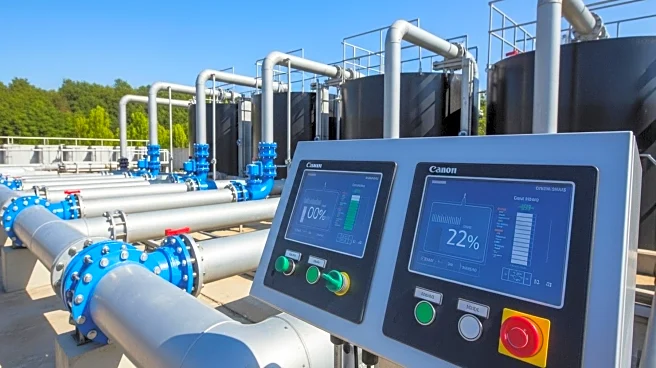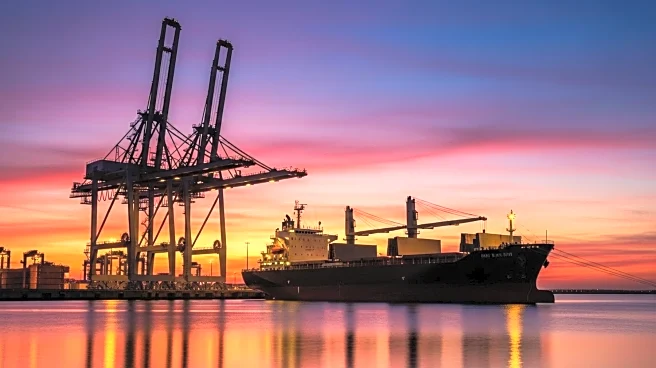What's Happening?
The Association of American Railroads (AAR) has released its Rail Industry Overview, highlighting gains in U.S. rail carload and intermodal volumes for August. According to the report, U.S. rail carloads increased by 0.7% annually, marking the sixth consecutive month of annual growth. The report tracks 20 carload commodity groups, with 11 showing annual increases, including grain, coal, chemicals, and primary metal products. The August Freight Rail Index (FRI) saw a 0.5% decline from July, yet remains strong historically. Intermodal volumes also rose by 0.5% annually, reaching the highest level since May 2021. Year-to-date figures show a 4.1% increase in total U.S. intermodal volume, with container movements up 5.2%, the highest on record for this period.
Why It's Important?
The increase in rail carload and intermodal volumes is a positive indicator for the U.S. economy, suggesting resilience in supply chains despite uncertainties in the labor market and broader economic conditions. Rail traffic is often seen as a reliable economic indicator, reflecting the movement of goods and commodities across the country. The gains in rail volumes could signal stable economic activity and potential growth, benefiting industries reliant on freight transportation. However, the intermodal sector remains vulnerable to shifts in consumer spending, global trade flows, and policy-driven uncertainties, necessitating flexibility and efficiency from railroads.
What's Next?
The outlook for intermodal volumes remains uncertain, influenced by consumer spending patterns, global trade dynamics, and policy changes. Railroads will need to maintain adaptability and operational efficiency to navigate potential fluctuations in demand. Stakeholders in the freight industry, including policymakers and businesses, will closely monitor these trends to inform strategic decisions and investments. Continued analysis of rail traffic data will be crucial in understanding economic trajectories and preparing for future challenges.
Beyond the Headlines
The report underscores the importance of rail transportation in driving economic activity and highlights the interconnectedness of various sectors. As rail volumes reflect broader economic conditions, stakeholders must consider the implications of shifts in rail traffic on supply chain management, infrastructure development, and environmental sustainability. The resilience of rail volumes amidst economic uncertainties may prompt discussions on enhancing rail infrastructure and optimizing logistics operations to support long-term growth.











